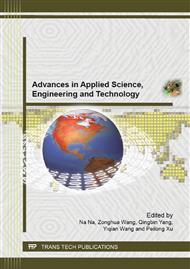p.166
p.172
p.176
p.180
p.184
p.188
p.192
p.197
p.201
First-Principle Calculations for Magnetism of Mn-Doped Graphene
Abstract:
Mn doped graphene-based dilute magnetic semiconductors (DMS) are investigated using the first-principle calculation based on density functional theory. In this paper, the Mn-C bond length, formation energy and magnetic moment are calculated in different doping systems and their density of states is made a detailed analysis. It is found that Mn-doped graphene has strong ferromagnetic properties and the magnetic moments of graphene supercells are different with the impurity concentrations. These supercells of a Mn atom substituting a C atom are increasingly stable with extending cells and the 11×11 supercell possesses the biggest magnetic moment of 3.8μB in these systems. The analysis of the density of states indicates the magnetic properties of Mn-doped graphene derive from the p-d exchange mechanism.
Info:
Periodical:
Pages:
184-187
Citation:
Online since:
June 2013
Authors:
Keywords:
Price:
Сopyright:
© 2013 Trans Tech Publications Ltd. All Rights Reserved
Share:
Citation:



